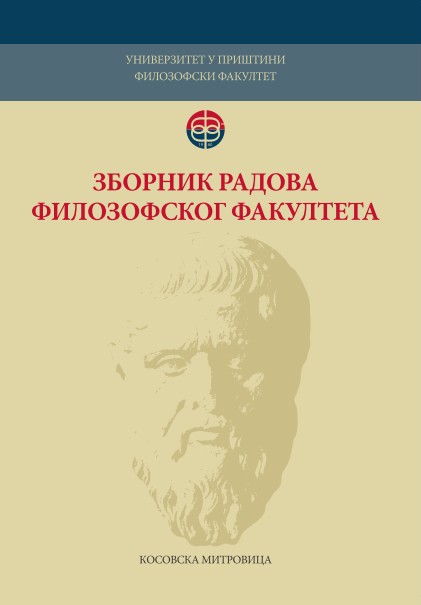Остратија или Остраћа
Ostatija or Ostraca?
Author(s): Božidar ZarkovićSubject(s): Economic history, 13th to 14th Centuries
Published by: Филозофски факултет, Универзитет у Приштини
Keywords: Pope Clement VI (1342-1352); Ostraca; Ostatija; mining industry; urbanization; Serbia; Middle Ages
Summary/Abstract: In the letter of Pope Clement VI, which is addressed to the Serbian ruler Stefan Dušan on January 7, 1346, the places from the interior of Serbia, where Roman-Catholic parishes were settled, were listed. The letter is significant for many reasons, among other things, because it bears testimony to the process of urbanization on the territory of medieval Serbia. Settlements mentioned in the letter were urban places proved by the existence of Roman-Catholic communities in them. These communities consisted of Saxons and Latins, i.e. the miners of German origin and tradesmen who arrived from Primorje (cities on the east coast of Adriatic Sea). The letter was written in Latin, with the names of places in the way the Pope and his secretariat interpreted them, due to which, as well as due to the lack of other historical sources, their identification was made difficult. Owing to the significance, the letter was noticed early on and was frequently quoted. Nevertheless, the identification of certain places has still remained the same. One of the places that many researchers disputed over, which even nowadays still raises doubts, is Ostacia, as it is written in the letter. An extraordinary expert in Serbian history and the initiator of historical-geographic researches, Konstantin Jireček, mentioned this place as the village Ostraċa, on the western slopes of Kopaonik. He confirmed his findings, among other things, in the Charter of the nun Jevgenija (princess Milica) and her sons Stefan and Vuk, which was willed in 1400 to the monastery of Saint Panteleimon on the Mount Athos; the Charter mentioned Ostraċa together with a well-known mine and a marketplace Koporiċe. Jireček did not change his opinion even after the publication of paper by Avram Popoviċ, who accepted the identification Ostraċa, but also said that there were no remains of mining activities in this village. Afterwards, most researchers accepted Jireček’s opinion. An important researcher of historical geography and mining economy in medieval Serbia, Mihailo Diniċ, on the grounds of the absence of mining activities in Ostraċa, as well as the toponymy and similarity of names, came to the conclusion that it was actually the place Ostatija in the spring area of the river Studenica on the mountain of Golija. Field research of the geologist Vasilije Simiċ confirmed Diniċ’s attitude. Nevertheless, Jireček’s opinion still prevails in the research studies. The main opinions are supported by arguments as to why Ostacia from the Pope’s letter should be identified with Ostatija. The paper also points out the reasons due to which identification with Ostraċa still persists in the literature.
Journal: Зборник радова Филозофског факултета у Приштини
- Issue Year: 47/2017
- Issue No: 2
- Page Range: 169-193
- Page Count: 25
- Language: Serbian

